heyLive Ridley turtles have long graced Odisha’s Gahirmatha and Rushikulya beaches. Every year, they come ashore from the Bay of Bengal for the massive nesting season, also known as arribaada, which in Spanish means arrival by sea. This year, the scale of nesting has been larger than usual, much to the delight of wildlife officials and activists.
Odisha has made sustained efforts to conserve the habitat of the Olive Ridley turtles, which are classified as vulnerable by the International Union for Conservation of Nature.
The boat journey to Gahirmath and Rushikulya is a precarious one for the turtles, who have to swim thousands of kilometers in the annual search for the right conditions to nest. After reaching the shore, the turtles make nests in the sand, lay eggs, cover them with sand, and return to the sea. This year, many of them can be seen even during day time.
According to estimates, only one turtle from a batch of 1,000 eggs reaches adulthood due to the many obstacles along the way. Chicks come out 40-45 days after laying eggs. Many eggs are damaged during high tide and due to beach erosion.
Wildlife experts said the right conditions and clean beaches may have contributed to early nesting this year. This number has surpassed last year’s figure of 5.5 lakh Olive Ridley turtles, which nested on Odisha’s beaches between March 28 and April 4. This year’s final numbers will be calculated at the end of the nesting season.
Photo: Biswaranjan Raut
Discovery of the sanctuary: Olive Ridley turtles, a vulnerable species according to the International Union for Conservation of Nature, come to the mouth of the Rushikulya River in Odisha to lay eggs.
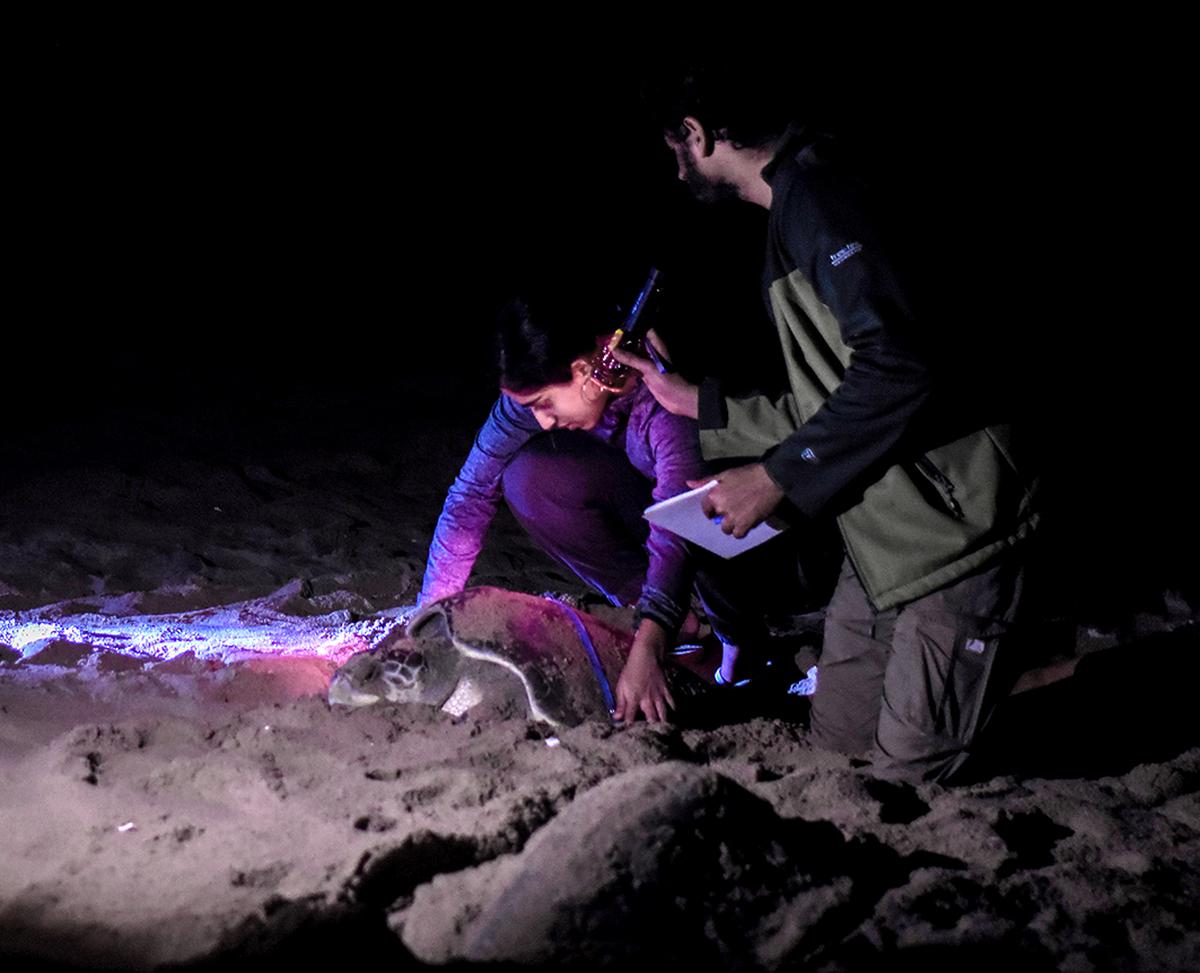
Photo: Biswaranjan Raut
For the record: A wildlife officer measures an Olive Ridley turtle, which has reached the beach along Podampeta village in Ganjam district.
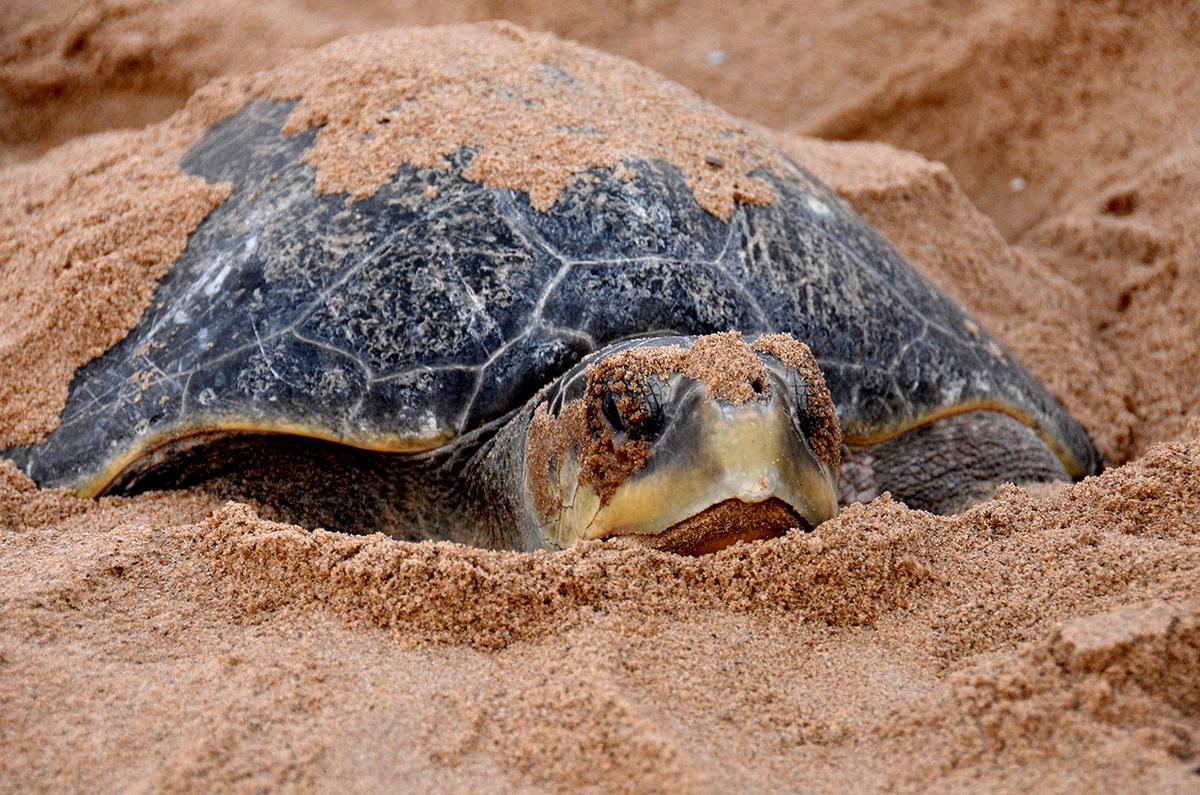
Photo: Biswaranjan Raut
Reaching the Destination: Once the turtle has found the right spot, it settles down to make a shallow nest where it lays an average of about 100 eggs.
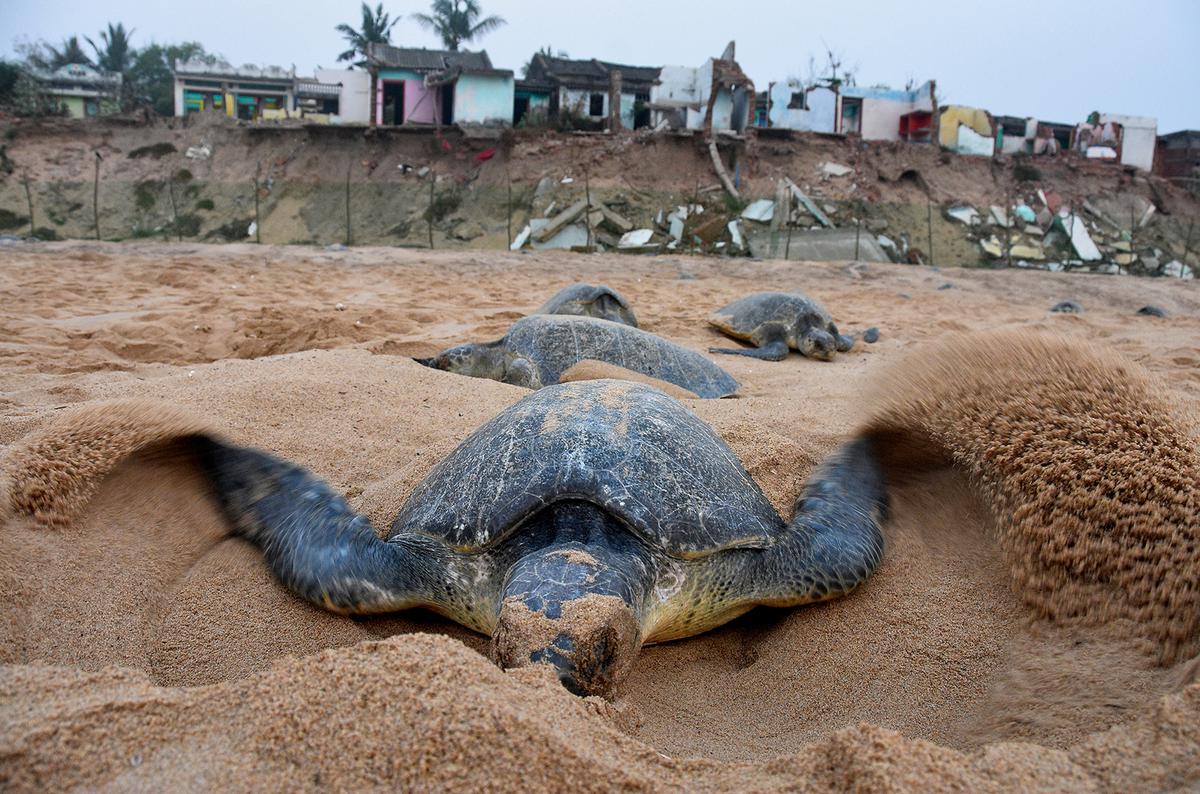
Photo: Biswaranjan Raut
On the other hand: A tortoise uses its flippers to scoop out sand to create a cavity 30 cm to 50 cm deep in which to lay eggs.
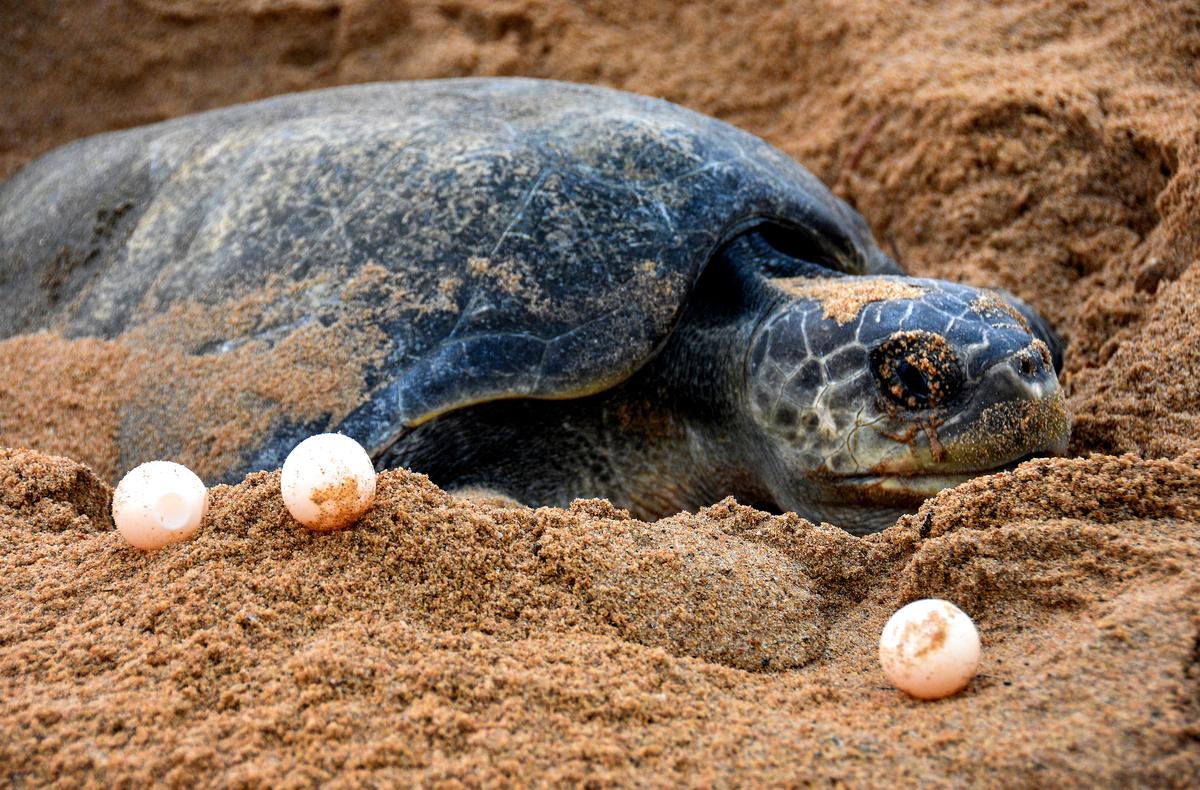
Photo: Biswaranjan Raut
Handle with care: Olive Ridley eggs require protection from stray dogs and human interference. If a nest is disturbed, the eggs are sometimes moved to a protected area by wildlife officials.
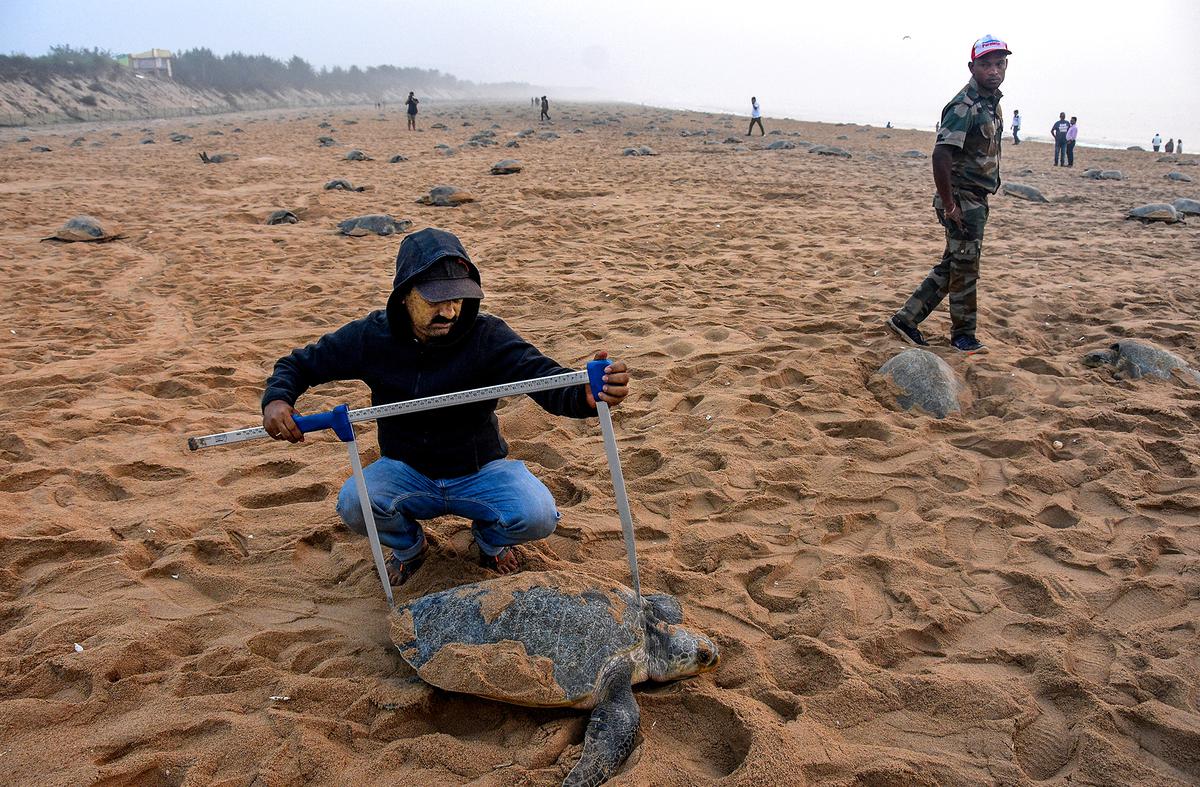
Photo: Biswaranjan Raut
Measure for Measure: Growing to about half a meter and up to 50 kilos in weight, the Olive Ridley tortoise gets its name from its greenish-grey carapace (top shell). It is the smallest of all sea turtle species.
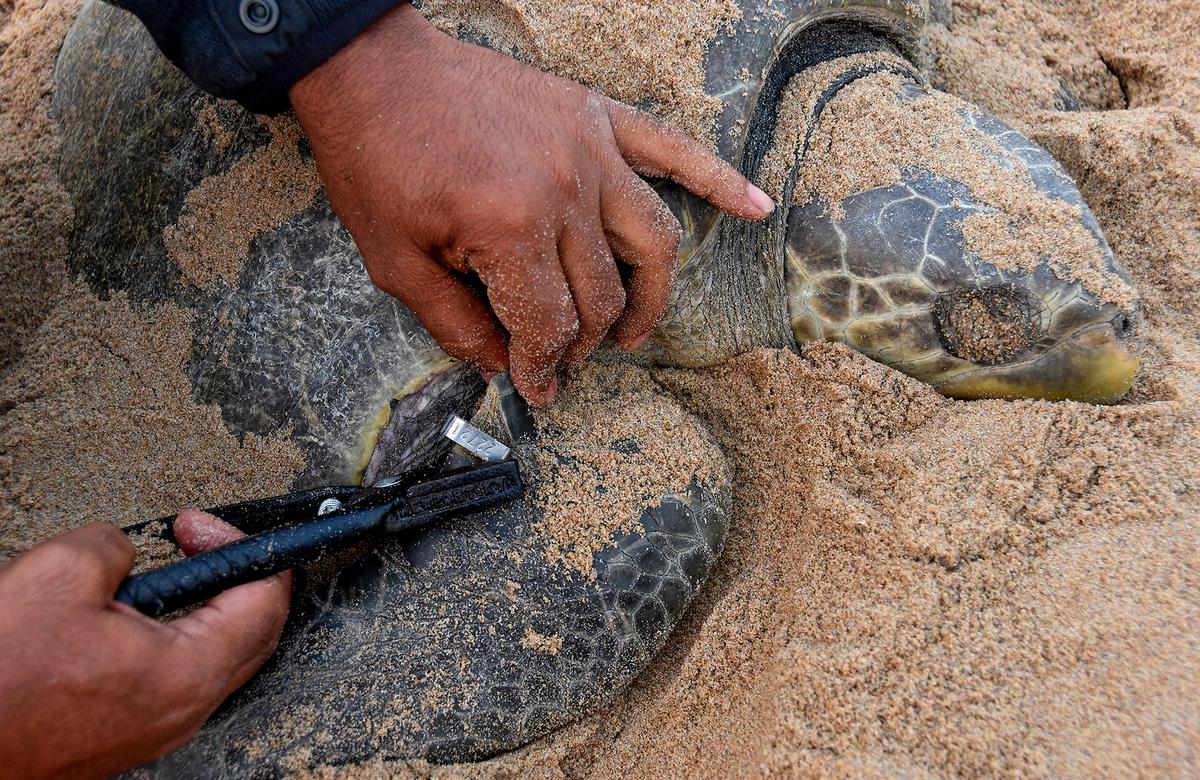
Photo: Biswaranjan Raut
Tracking: An Olive Ridley turtle is tagged to help identify its migration path, understand the behavior of marine reptiles, and use that knowledge for conservation efforts.
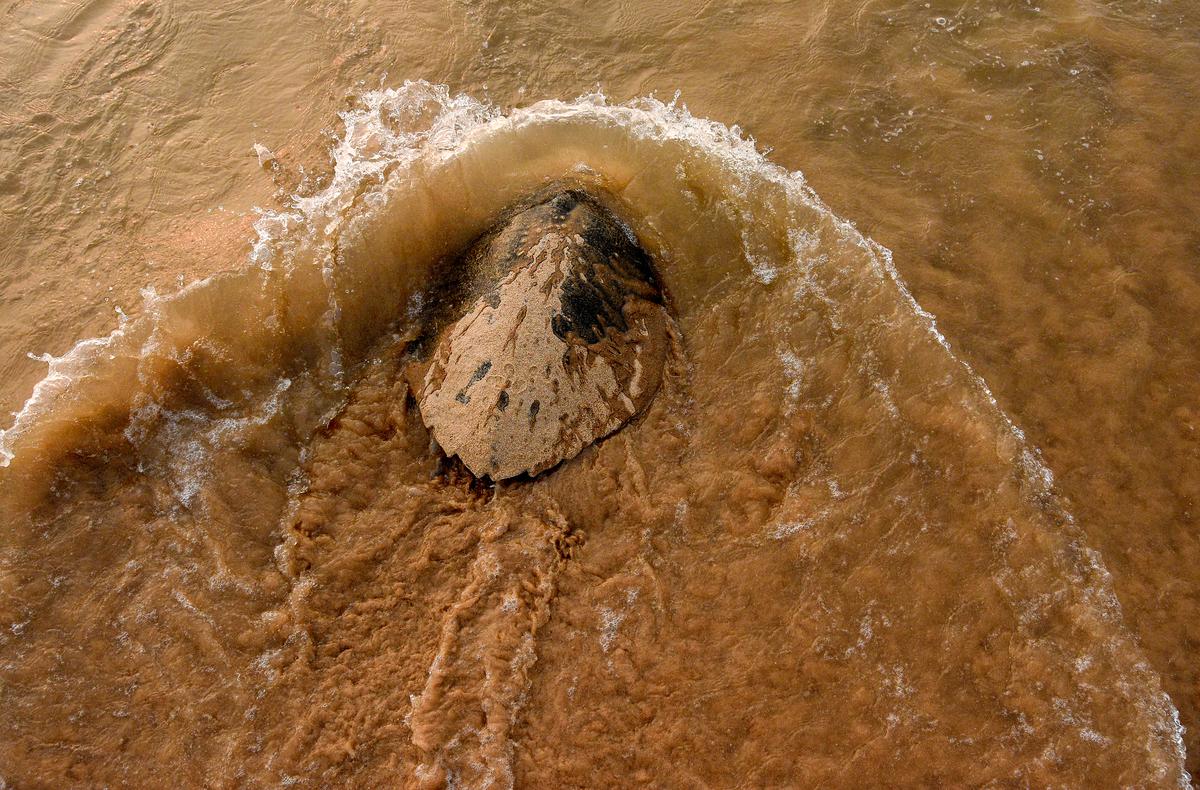
Photo: Biswaranjan Raut
The Long Swim Ahead: A turtle makes its way back to the sea after nesting.
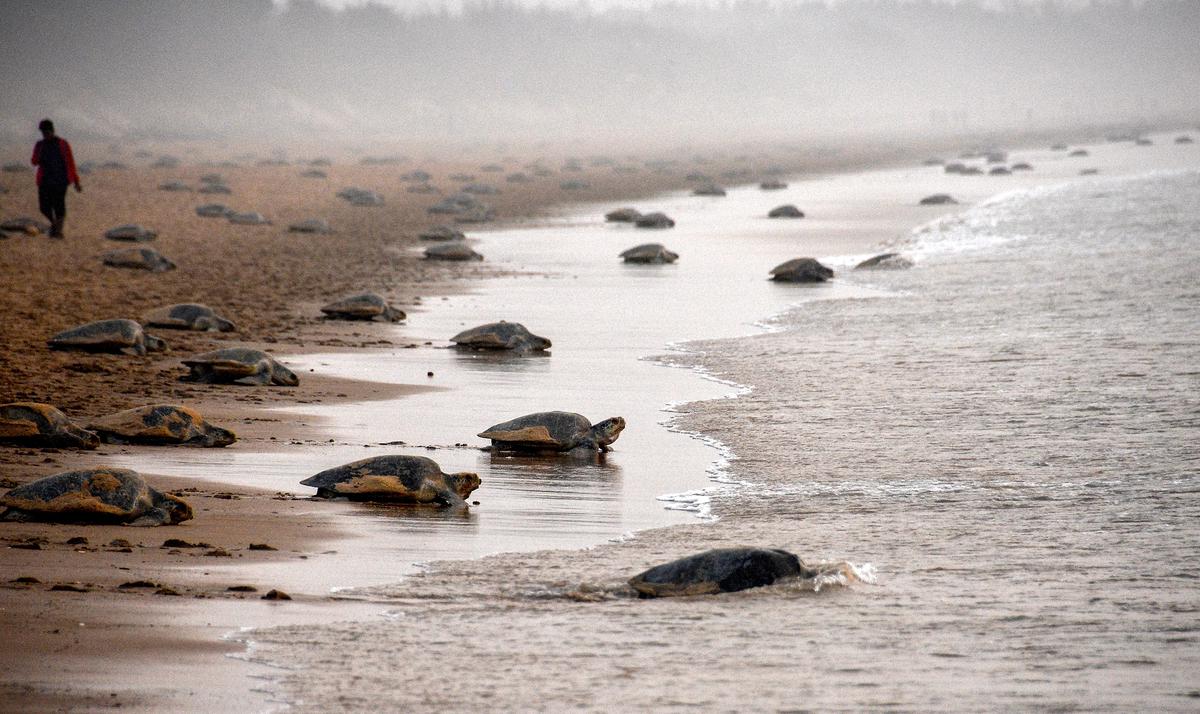
Photo: Biswaranjan Raut
Au revoir: Olive Ridley turtles don’t wait to hatch, but return the next season to lay eggs again. They spend their lives at sea, inhabiting the tropical and subtropical waters of the Pacific, Indian and Atlantic oceans.